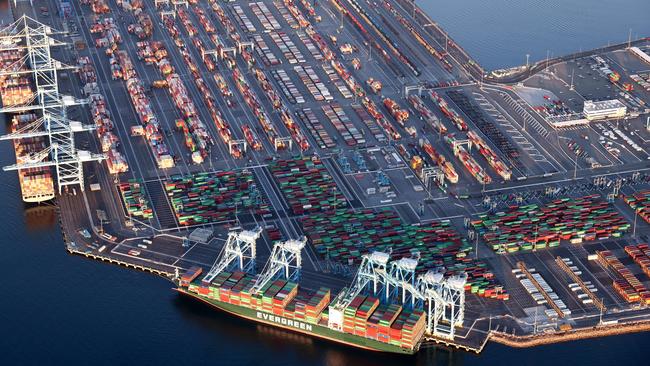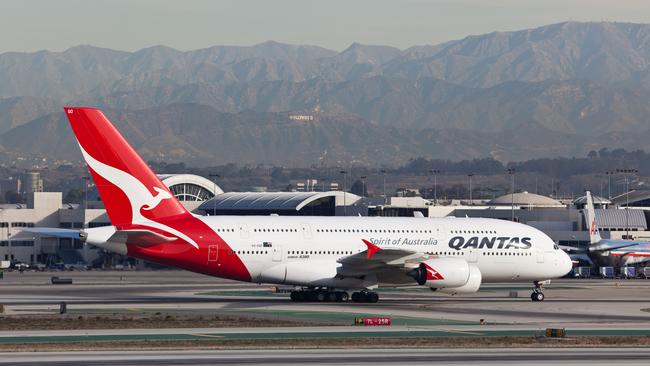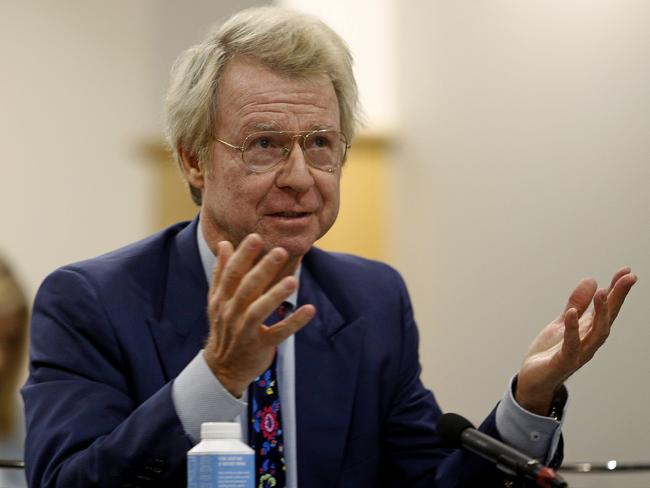Australian dollar falls to lowest level in nearly five years after turmoil from Trump’s tariffs
The dollar could test lows not seen since market turmoil in early 2020 in the coming weeks, after US tariffs heighten the risk of a global trade war.

The Australian dollar could revisit levels not seen since market turmoil at the onset of the Covid-19 pandemic in 2020, after it fell to a five-year low on Monday, driven by concerns over a global trade war.
The weaker dollar is bad news for travellers, motorists and those buying products from overseas, and Australia could be caught in the crossfire of a global trade war, crippling hopes of an economic recovery.
The decision by US President Donald Trump to place a 25 per cent tariff on imports from Canada and Mexico and 10 per cent on Chinese products from this week saw the Aussie plunge by more than 2 per cent on Monday to US60.92c – its lowest since April 2020.
The Aussie dollar has now lost 12.5 per cent against the US dollar in the past four months. On Monday, it bought 49.85 British pence and 59.75 euro cents, while it remained unchanged at 90 Canadian cents.
IG market analyst Tony Sycamore said Mr Trump’s announcement was more hawkish than anticipated with warnings of additional tariffs if countries retaliated, and indicating that tariffs on Europe are imminent.
“We’re potentially looking at a trade war on multiple fronts and that is a real concern for global trade, equity markets and the Aussie dollar,” he told The Australian.
“It’s all very hawkish and that’s not good for Australia. Trump is not likely to back away from using tariffs as he has a mandate from the American people to follow this path. The US is going to raise a lot of money and that will be applauded over there.”

Mr Sycamore said unless the dollar was able to regain territory in the coming week it was vulnerable to testing and falling below the psychologically significant US60c level, before a move lower towards US57c.
“It’s looking very ugly for the dollar,” he said. “We’re at the mercy of the US dollar and that is not going to weaken in this environment. It would not surprise me one bit if in a month the dollar is buying US57c.”
A weaker Australian dollar increases the cost of imported goods, which contributes to inflation. Although many importers hedge their currency exposure, the price increases still flow through to consumers with a lag of six months to a year. On the other hand, a weaker Australian dollar is good news for exporters who become more competitive.
Anthony Scali, the boss of furniture retail giant Nick Scali, said his retail business hedged its currency contracts for six to nine months to give it some flexibility in the face of volatile international exchange rates.
“If you go beyond nine months it could be a disadvantage, so you need to be flexible, but I think the Australian dollar is really getting whacked at the moment.”

Mr Scali said he hadn’t approached his furniture suppliers yet on pricing due to shifting currencies, as he was waiting to see where freight contracts, which had seen prices ease, landed towards the end of February.
Financial markets and the major banks all expect that the RBA will cut interest rates by 25 basis points to 4.1 per cent when it meets later in February.
AMP chief economist Shane Oliver said a weak dollar was not likely to push the RBA in keeping rates on hold this month, but added that if it did cut and the Aussie remained weak then it could slow the pace of mortgage relief.
“There would be fear that moving too quickly could make the Aussie dollar fall more aggressively, posing a bigger threat,” he said.
Dr Oliver said a global trade war could build the case for rate cuts, as it could weigh on economic activity in Australia due to less demand for raw materials.
“If countries start putting tariffs on each other and China it could see global trade fall and create a less competitive environment, which could add to inflation over time, but unless the dollar collapses or Australia starts raising tariffs then it remains to be seen,” he said.
“The sell-down in the dollar is markets saying that tariffs could have an impact on economic growth and taper any rebound in growth that we might otherwise have sought.”
In the lead-up to the US election, Mr Trump hinted at raising tariffs on Chinese imports to 60 per cent or higher if he was re-elected. Currently, about 60 per cent of imports from China are already subject to tariffs, averaging around 17 per cent.
Mr Sycamore said on face value, a strong US dollar could provide a windfall for exporters who sold goods in US dollars and repatriated that back into Australian dollars for dividends.
However, it was bad for businesses such as Qantas, which is a larger importer.
“We may see airlines talking about putting a fuel tax back on because of the price of oil and a weak Australian,” he said. “(Qantas) will be very quick to let the market know if they’re finding that the price of fuel has become more than they budgeted for.”
Qantas was down by 2 per cent on Monday. It has in recent years increased prices to cover the rising cost of fuel.






To join the conversation, please log in. Don't have an account? Register
Join the conversation, you are commenting as Logout